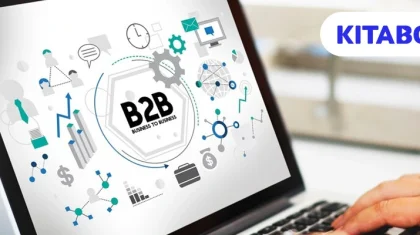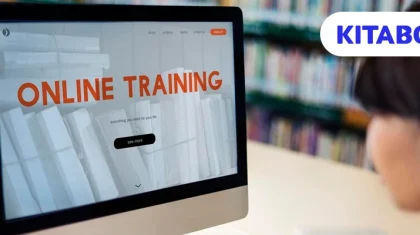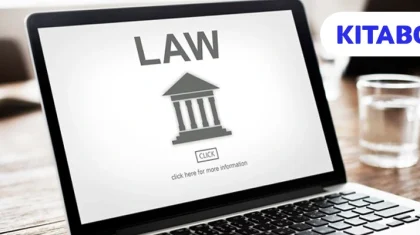
Current Trends in Higher Education: A Deep Dive
The years since COVID-19 have seen a rapid change in our education system. Lockdowns drove schools and universities to adopt online learning. Now, enduring trends are reshaping higher education with innovation and dynamic learning approaches for student success.
The online education market is expected to reach $185.20 billion in 2024 and grow at an annual rate of 8.56% to reach $279.30 billion by 2029. This trend is shaping future trends in higher education and has changed the way we look at education.
Read on as we explore the current trends in higher education and their impact on the future of learning in 2024 and beyond.
Let’s get exploring!
Table of Contents:
What are the Current Trends in Higher Education in 2024?
As the use of technology and digital media increases, the latest trends in higher education focus a lot on the use of modern equipment in education. This can be seen beyond just the classroom, encompassing textbooks, curriculum, assessments, and even admissions.
Here is a look at some of the top trends that are shaping higher education in 2024:
Changing Admissions Landscape
Traditionally, college admissions focused heavily on standardized tests and high school GPAs. However, a growing trend is the holistic review process, which considers a wider range of factors. Today, there is a rise in direct admission programs, with online enrolment processes and other innovative admission strategies aimed at targeting a diverse set of learners.
These admission processes consider factors like extracurricular activities, essays that showcase students’ passions and motivations, and even evidence of work experience for non-traditional students. This shift reflects a growing recognition that academic performance alone doesn’t necessarily predict future success.
We are witnessing this trend being enforced with landmark judgments like the Free Application for Federal Student Aid (FAFSA) Simplification Act, which provides more flexibility to help determine students’ eligibility for grants and relaxes deadlines for the same.
Increasing Use of AI and Deep Tech
One of the biggest trends in education technology is the increasing use of Artificial Intelligence (AI) and machine learning (ML) to automate and streamline educational processes. These technologies are no longer futuristic concepts but are rapidly becoming integrated into the fabric of higher education.
Some of the ways AI and deep-tech are making an impact in the higher education landscape include:
- Personalized Learning: AI algorithms can analyze student data (learning styles, strengths, and weaknesses) to create personalized learning paths. This allows educators to tailor instruction and resources to fit each student’s needs, leading to a more effective and engaging learning experience.
- Intelligent Tutoring Systems: AI-powered tutors can provide students with immediate feedback, answer questions 24/7, and suggest personalized learning activities. This frees up instructors’ time for more complex tasks like mentoring and facilitating discussions.
- Predictive Analytics: By analyzing student data, AI can predict students who might be at risk of falling behind or dropping out. This allows instructors to intervene early and provide targeted support to help students succeed.
- Accessibility Tools: Deep-tech solutions like text-to-speech and speech recognition software can make educational materials accessible to students with disabilities, creating a more inclusive learning environment.
Preference for Hybrid of Remote Classes
The rise of technology and the changing demographics of higher education have fueled a surge in the popularity of hybrid learning models. This approach combines the benefits of traditional in-person instruction with the flexibility and accessibility of online learning.
One key driver of this trend is the increasing number of non-traditional students. Working adults, older learners, and those with family obligations often require flexible schedules and options for remote learning.
Hybrid models cater to these needs by allowing students to participate in some lectures or coursework online while still offering opportunities for face-to-face interaction with instructors and classmates. Furthermore, the COVID-19 pandemic accelerated the adoption of online learning platforms and highlighted the demand for greater flexibility and accessibility in educational delivery.
Hybrid models offer the best of both worlds: the structure and personalized attention of on-campus experiences alongside the convenience and self-paced learning opportunities of online platforms.
Data Security & Protection
The growing use of technology in education necessitates a strong focus on data security and protection. As more student information and learning activities migrate to online platforms, institutions have a responsibility to safeguard this sensitive data.
Here’s why prioritizing data security and protection is critical in education:
- Institutions must comply with regulations like FERPA (US) or GDPR (EU) to safeguard student information.
- With the increasing use of technology and analytical tools, educational institutions need to implement strong cybersecurity measures like firewalls, encryption, and regular security audits, which are crucial to protecting student data from unauthorized access, cyberattacks, and data breaches.
- Transparency on how private data will be used will be crucial in the future. Students have the right to understand how their data is being used, and this will help foster trust. The university needs to clearly communicate how this information will be used and stored, with the student having control over their data.
Digital textbook platforms like KITABOO can help you go beyond simply delivering content. They offer features like embedded assessments, interactive elements, and analytics that provide valuable insights into student learning behaviors and performance.
Use of Multimedia & Digital Textbooks
Another big change in higher education is prolix-world expertise. Students today need to develop practical skills like critical thinking, communication, and problem-solving, which will make them more adaptable and prepare them for the evolving workforce. Thus, educational materials, which traditionally used to be textbooks, have to evolve as well.
Educational publishing for K-12 and higher education understands this need, with modern textbooks shifting to digital formats.
Today’s future-proof educational content leverages various formats like text, audio, image, and video to help students understand a particular concept. This rich media content fosters a deeper engagement with the material and encourages students to think critically about the information presented.
Wrapping Up
As we have seen, the landscape of higher education is constantly evolving, and we have seen significant changes in the past few years.
In 2024, these trends will only evolve further to embrace current trends in higher education, such as:
- The shift towards a more holistic admissions process.
- The rise of hybrid learning models provides a blend of online and in-person learning, offering greater flexibility and accessibility for students.
- Use of technology like AI-powered tutoring, online learning, immersive AI/VR-enabled learning, AI-based assessments, and more to create an engaging learning experience.
- Focus on protecting student data and privacy.
- Emphasis on going beyond traditional textbook learning, using digital textbooks and publications to offer engaging content, interactive tools, and resources that foster critical thinking.
These trends are just the tip of the iceberg and will be revealed further as we progress through the year.
With educational digital textbook platforms like KITABOO, you can stay at the forefront of these trends, empowering educators and students with innovative tools and resources.
Discover how a mobile-first training platform can help your organization.
Kitaboo is a cloud-based platform to create, deliver & track mobile-first interactive training content.



